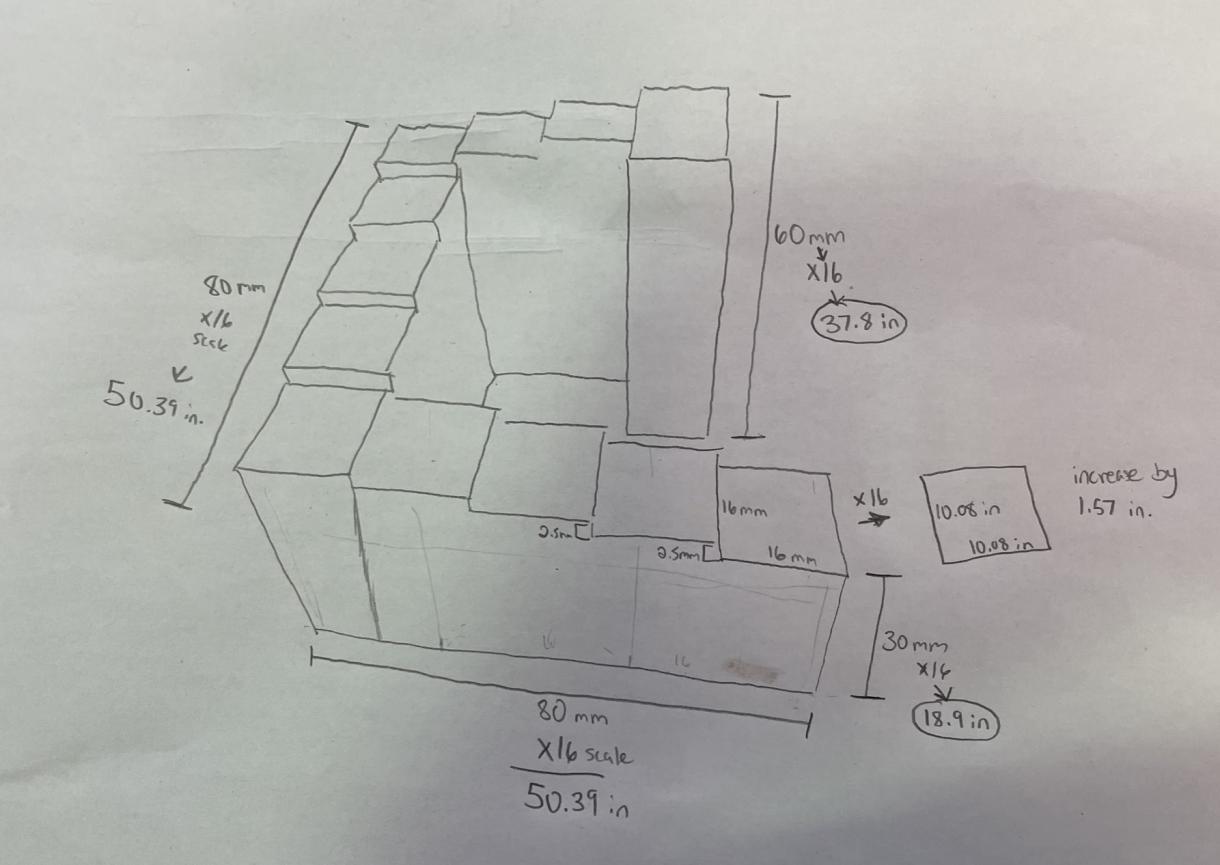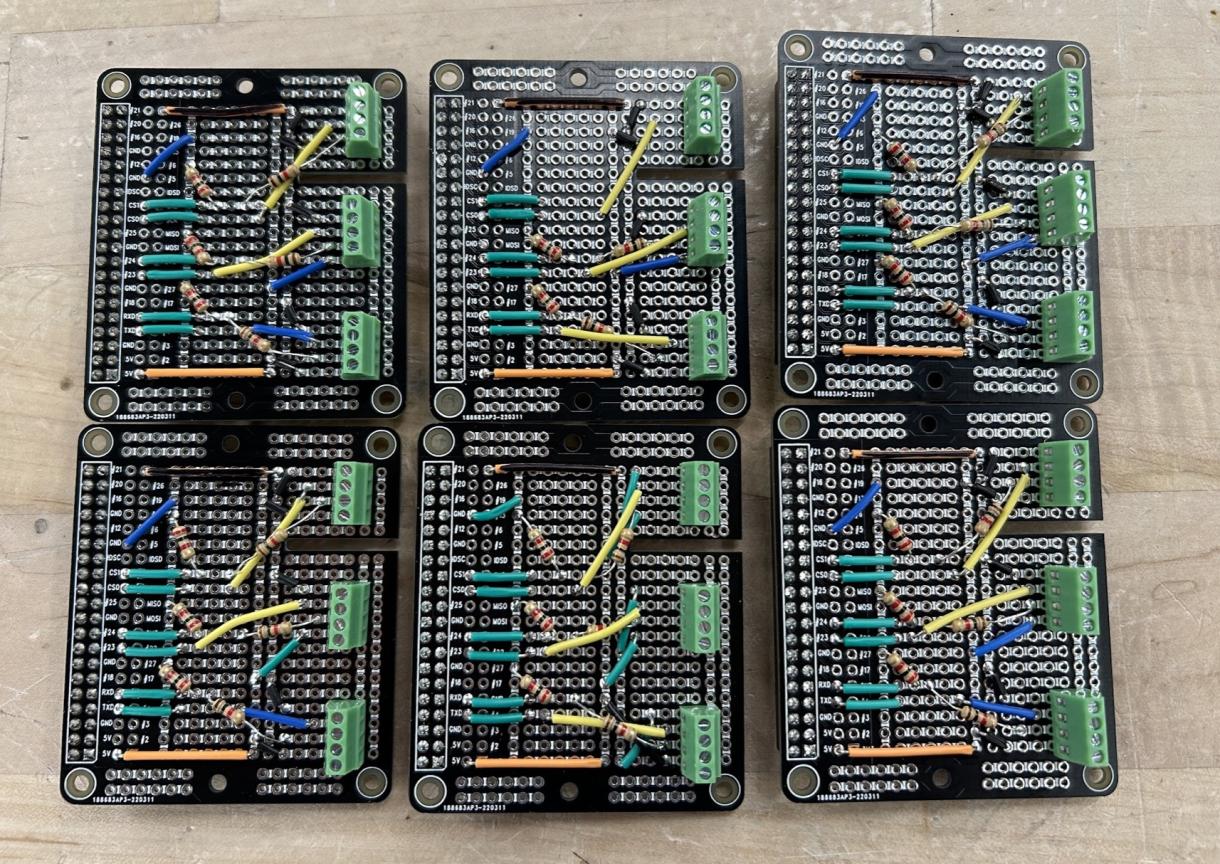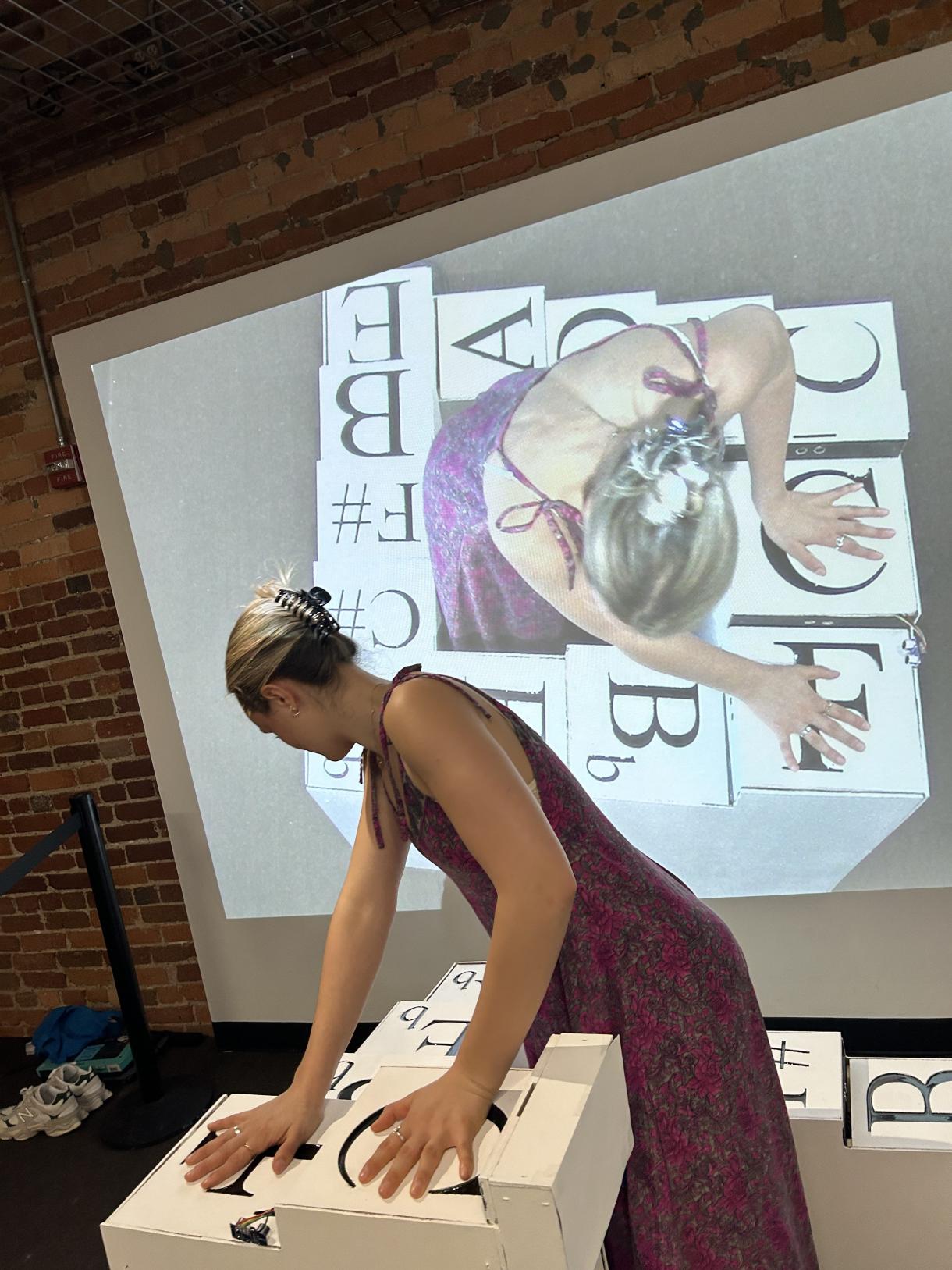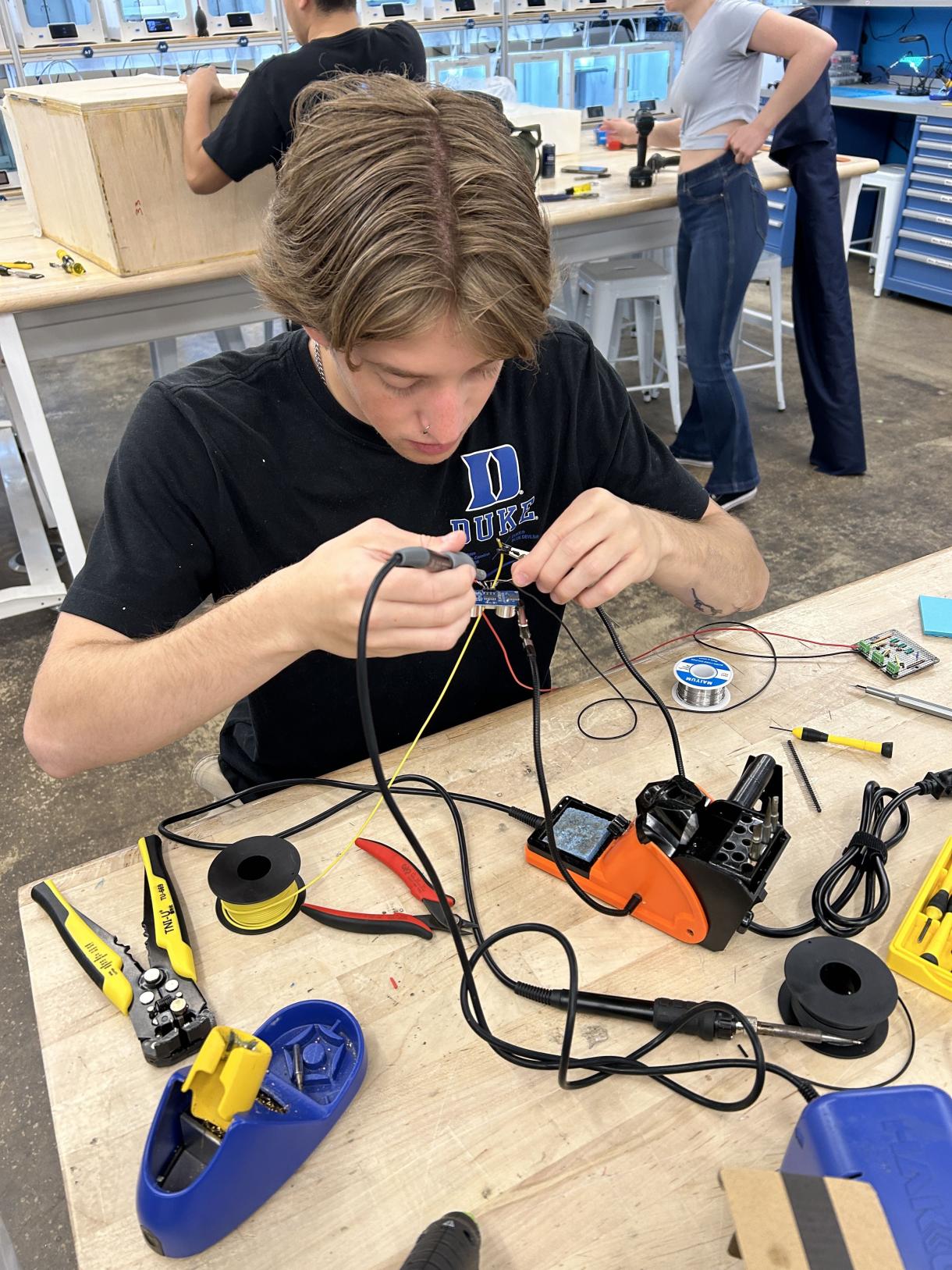
Blog
Grant Project Reflections: Brooks Finby on his Escher-inspired Musical Staircase
The blog post below was written by Brooks Finby, Trinity '24. In the spring of 2024, he was provided a Co-Lab grant to work on this project.
PHASE 1 - CONSTRUCTION (January - March):

Inspired by a music theory video explaining the circle of fifths, I decided to create a life-size, interactive piano staircase that mimics the impossible Penrose stairs for my Visual Media Studies Capstone Project. The concept was to create a structure that functions as an instrument to be played with one’s body, thus embodying the music-making creative process. I began the project by 3D-printing a miniature model of the Penrose stairs for size reference. Then, I extrapolated the scale to a roughly 4’x4’x3’ design (LxWxH). Next, I cut and screwed the wood under the supervision of Stephen Hayes to create the staircase scaffolding, divided into four sections. Once the scaffolding was complete, I used the shopbot router in the Innovation Co-Lab to carve the note names into 10’x10’’ square steps. I made 13 steps, spanning the whole octave scale from C3 to C4. After making the steps, I enclosed the scaffolding with masonite to hide the insides. Then, I sanded and painted the entire structure. Finally, I used black-tinted epoxy to fill in the routed notes.
PHASE 2 - ELECTRONICS (March - April):

After the construction of the staircase was complete, I worked with Daniel Davis on the engineering and programming aspects of the project. I began by purchasing the Raspberry Pi’s, breadboards, resistors, AC adaptors, and ultrasonic sensors. Next, I created a simple distance-measuring device from those materials. I then incorporated pygame.mixer sound files and if/then statements so that the music note would play if the sensor detected an object within the step range. This was accomplished by screen recording music notes off YouTube, cutting down to just the note in Premiere Pro, and downloading it onto the Pi itself. I also programmed the Raspberry Pi’s so that if multiple notes were triggered, the corresponding chord would play. Next, I moved on to the hardwiring portion of the project. Using prototyping boards, I hardwired the Raspberry Pi’s to the ultrasonic sensors to prevent the wires from coming loose. Once this process was complete for all five Raspberry Pi’s and thirteen sensors, I began the troubleshooting process again to squash the bugs that arose.
PHASE 3 - Exhibition (April):

With the staircase built and the electronics working properly, I merged the two together. I housed the electronics within the four staircase sections. Each Raspberry Pi was responsible for 2-3 steps, translating to 3-7 total notes/chords per Pi. I drilled holes into the thin planks between the steps so that the ultrasonic sensors could rest snugly into them. Placed above each step, the sensors detect the hand/foot that touches the step below and trigger the note/chord to play. The steps themselves were removable so that the electronics inside could be easily reached and adjusted. I also ran power through the whole structure by snaking extension chords into the scaffolding. The staircase was made stable by bolting the sections together. I had a time-consuming troubleshooting process with the sensors detecting phantom objects due to interference from the physical structure itself. Also, I successfully created the infinite staircase illusion by suspending a camcorder at the exact vantage point and connecting it to a projector.
The exhibition went quite well! Participants enjoyed how interactive the exhibit was. Students had fun experimenting and playing around with the structure, seeing what they could create musically. It was a uniquely kinetic, body-forward experience. It was also visually striking as a life-size 3D piece featuring an optical illusion. Despite some minor issues with sensor bugs, the exhibition was a big success!
REFLECTION:

On a personal note, this project was a deeply empowering experience. I set out on an ambitious project timeline that required me to learn completely new skills in just a few weeks, such as engineering and programming. Although I had been very involved in math and science in high school, my college experience has been fully in the humanities. Thus, this project was a way for me to gain a knowledge set that I feared I had lost and reconnect with my hands-on STEM abilities. Starting as a complete novice, I quickly gained a basic understanding of Python and the Raspberry Pi operating system. The experience has inspired me to further pursue coding. I want to teach myself Python in my free time and use it for further creative projects with the Raspberry Pi’s. I’m excited to see what I will create in the future. The woodworking and hardwiring portions of the project were very fulfilling, as I got to see the vision in my head come to life. Stephen Hayes and Daniel Davis were incredible mentors, and I am so thankful to them for their dedicated instruction. I gained a new level of confidence in myself by tackling an outside-the-box project that was far outside my comfort zone. I wasn’t sure if I would be able to complete the project in time, but my hard work paid off in seeing my friends interact with my exhibit. I’m so grateful to Michael Faber and the Co-Lab for all their support and guidance. Thank you!




